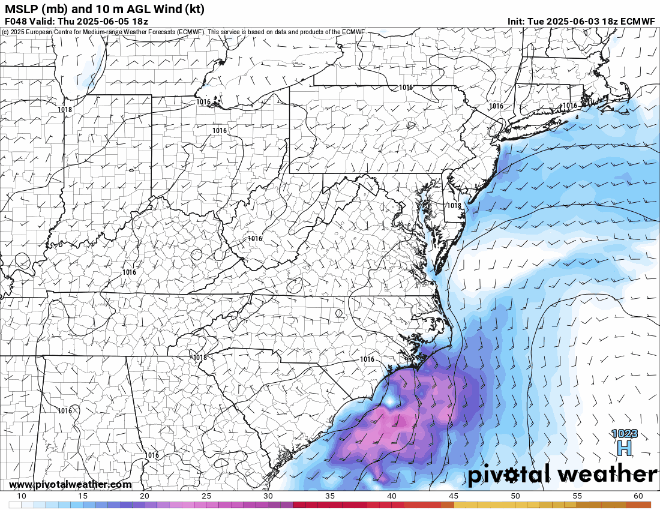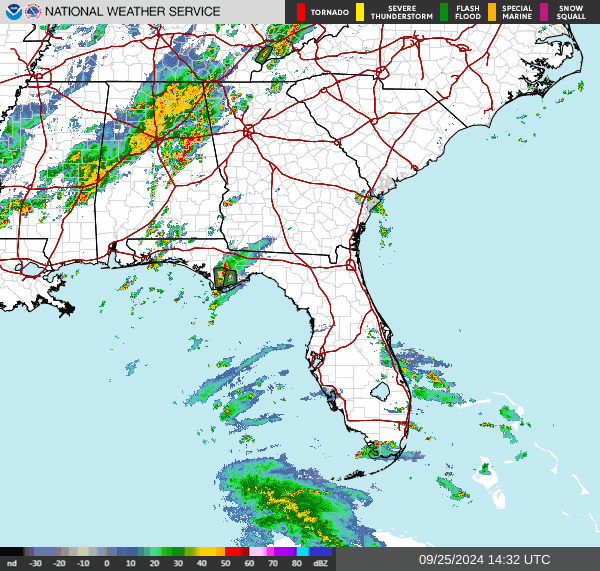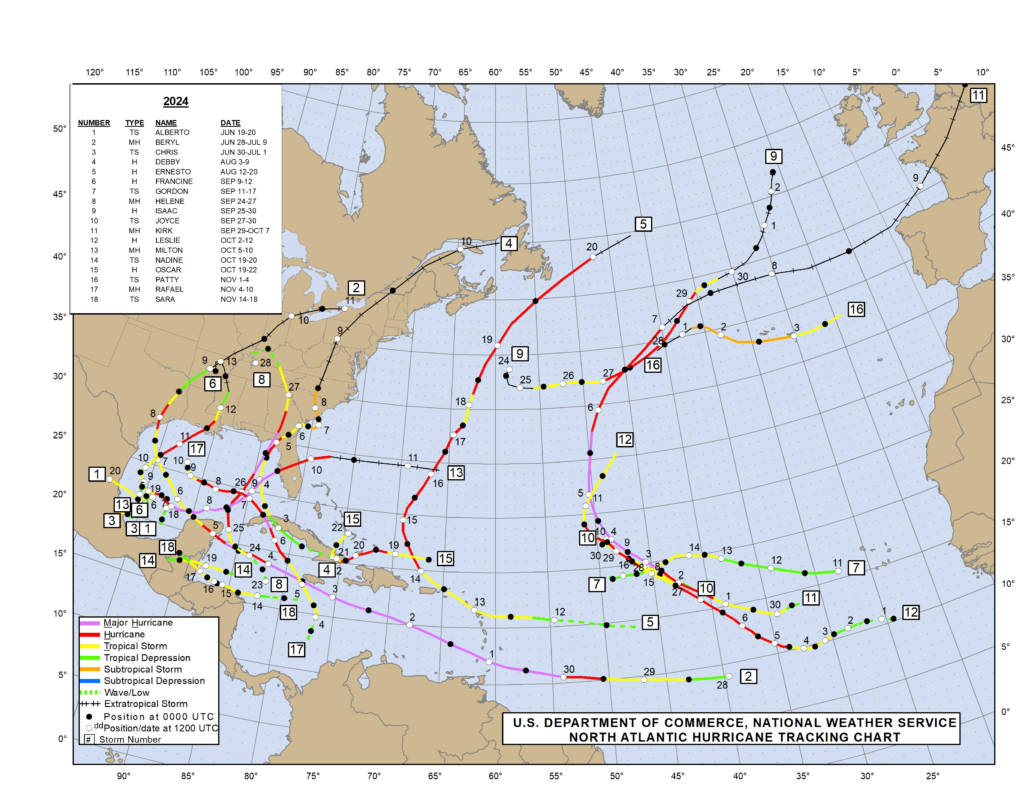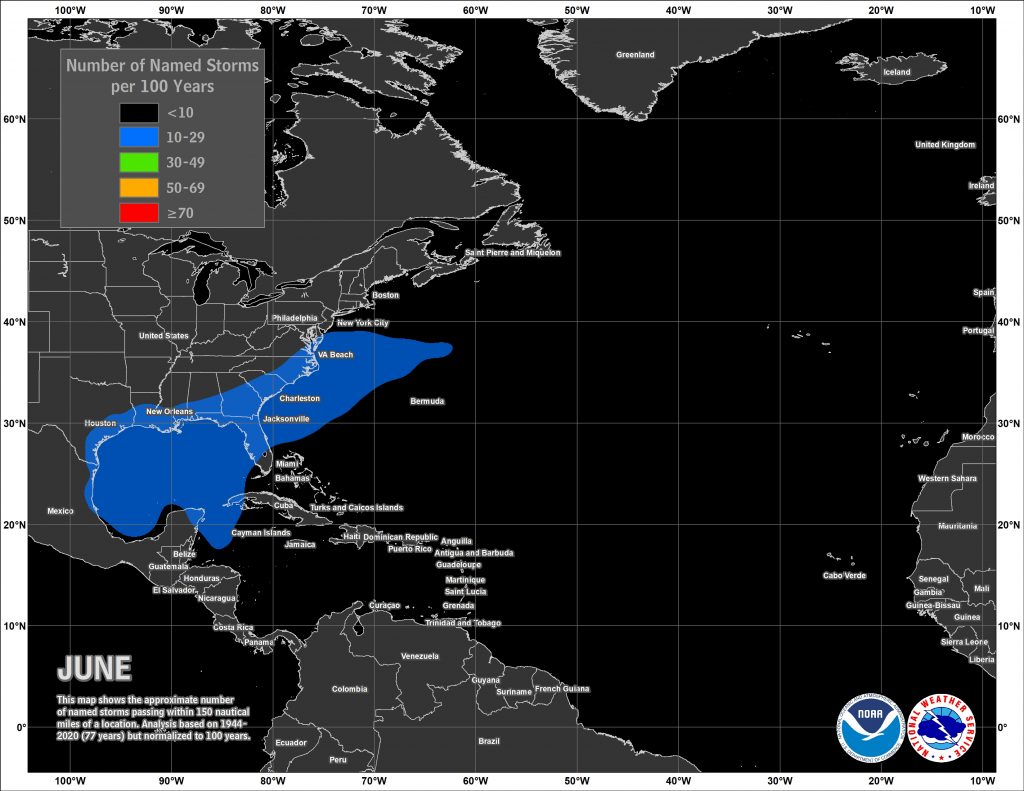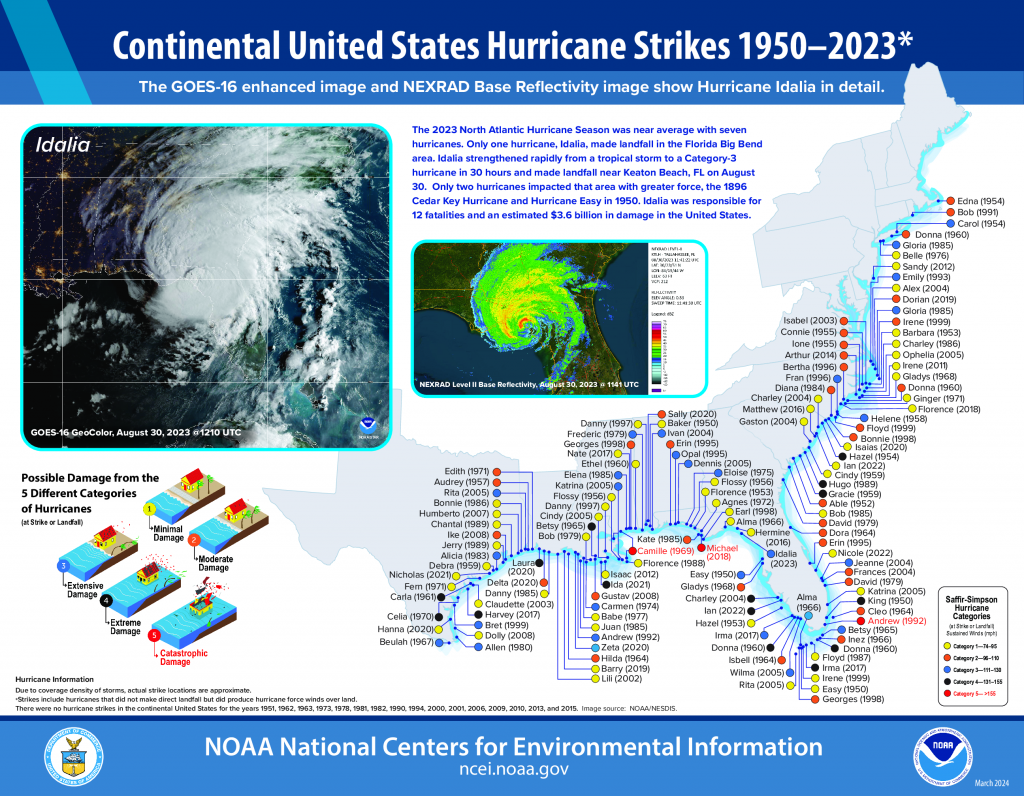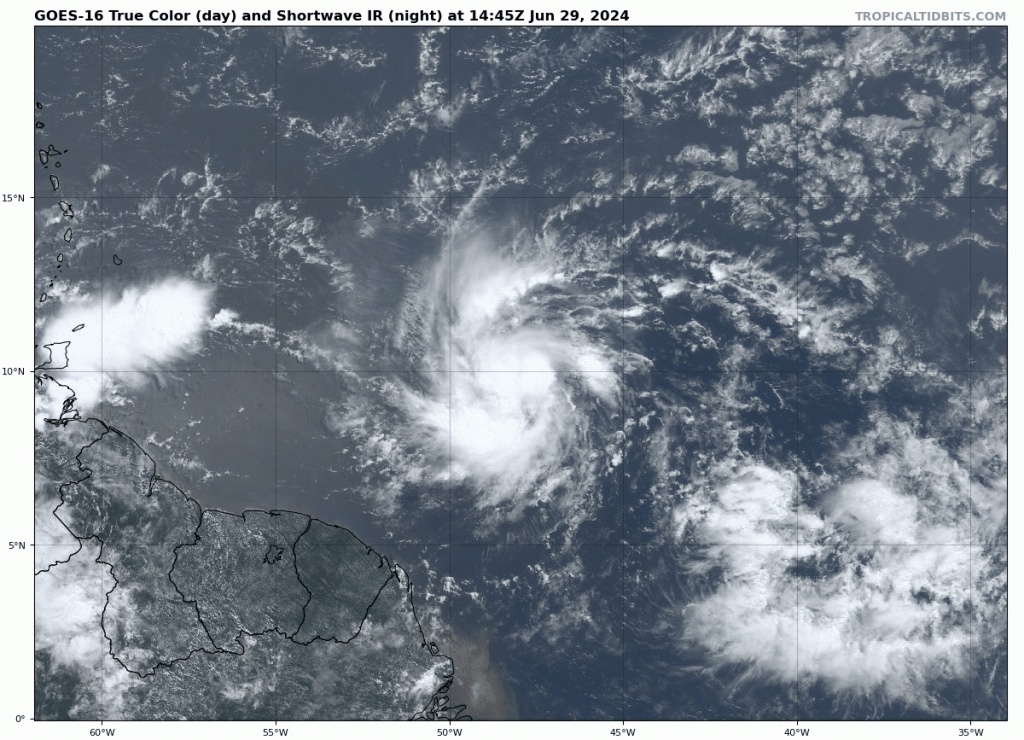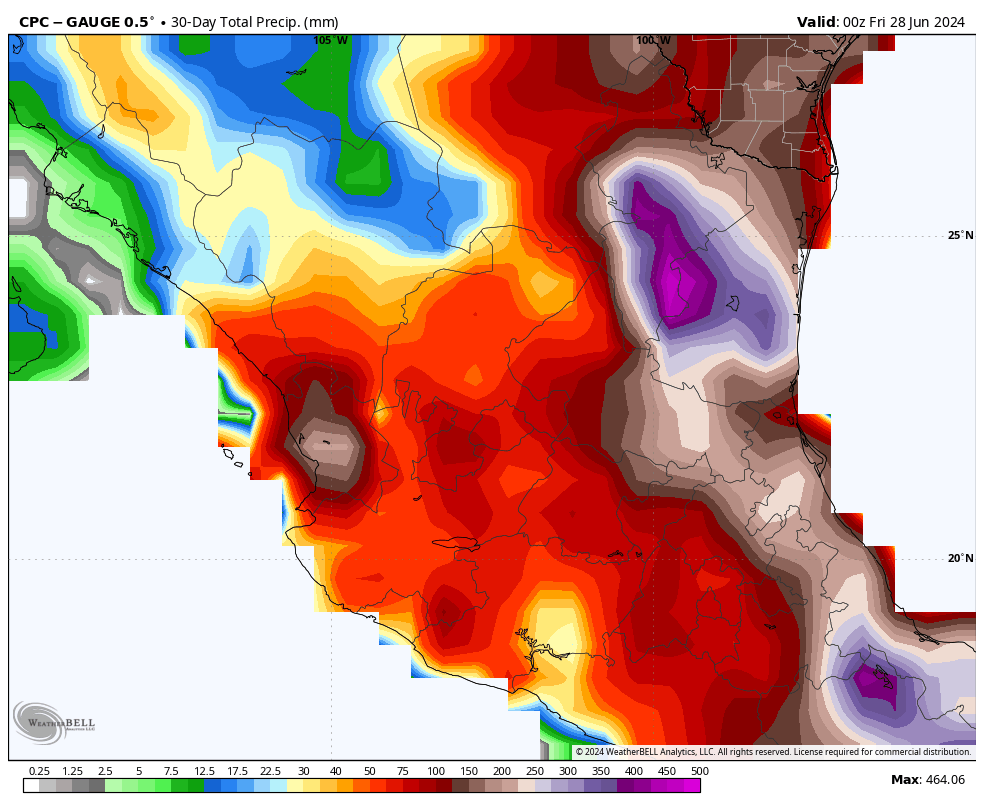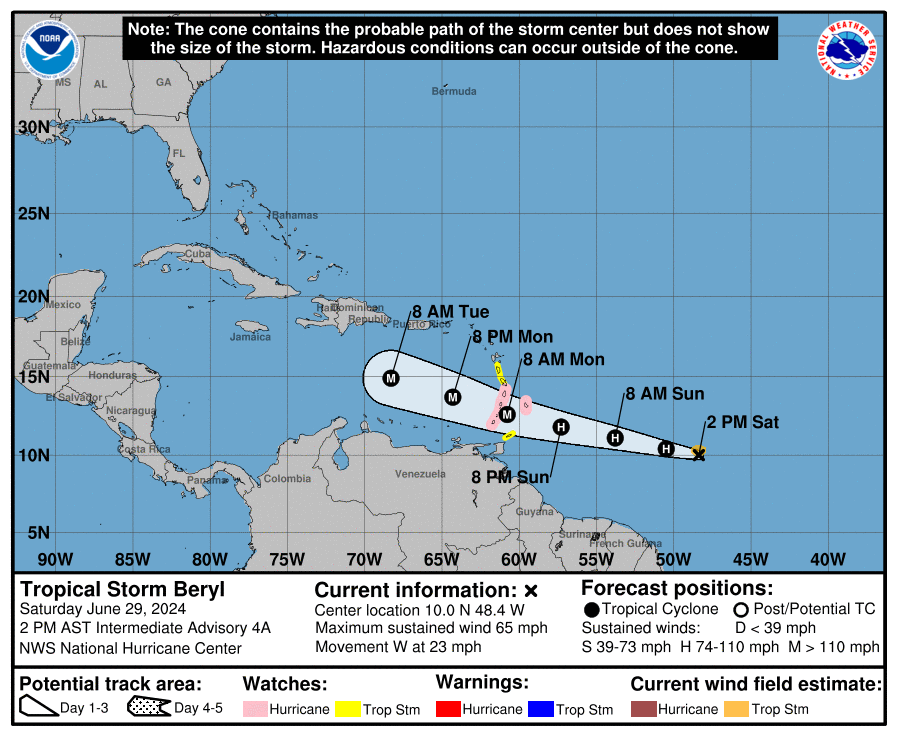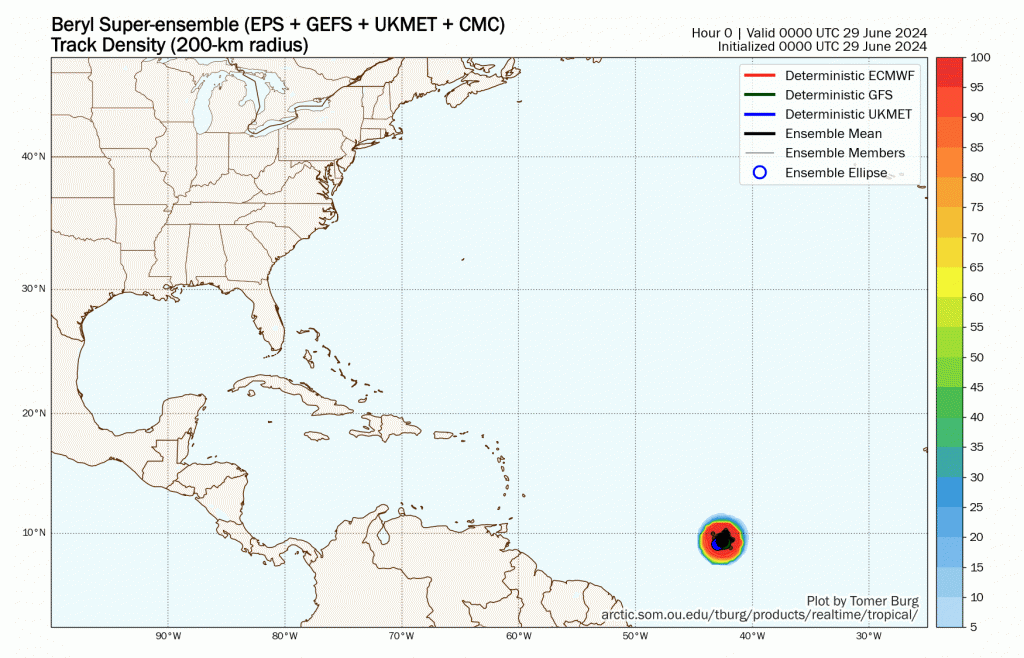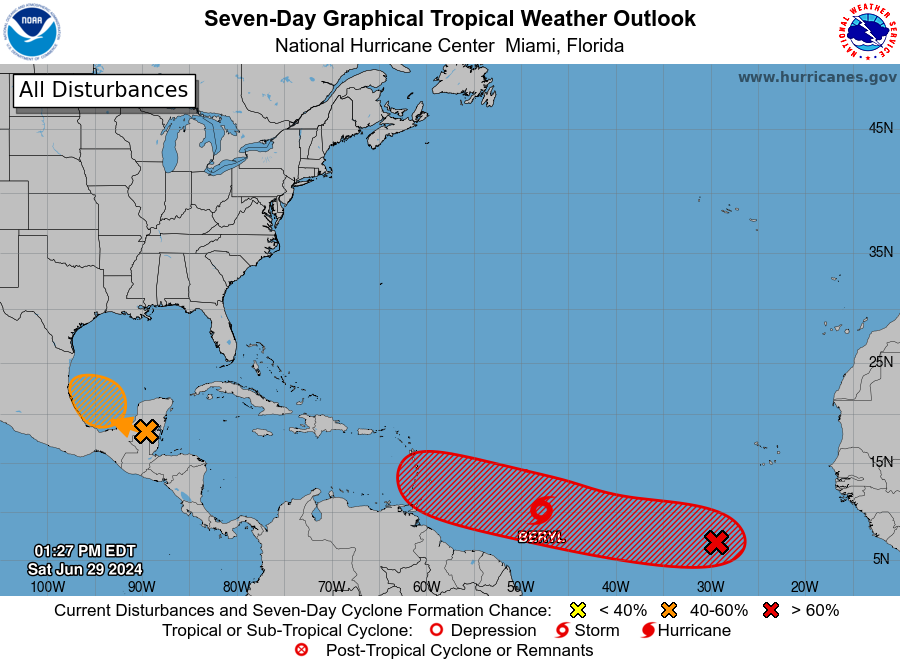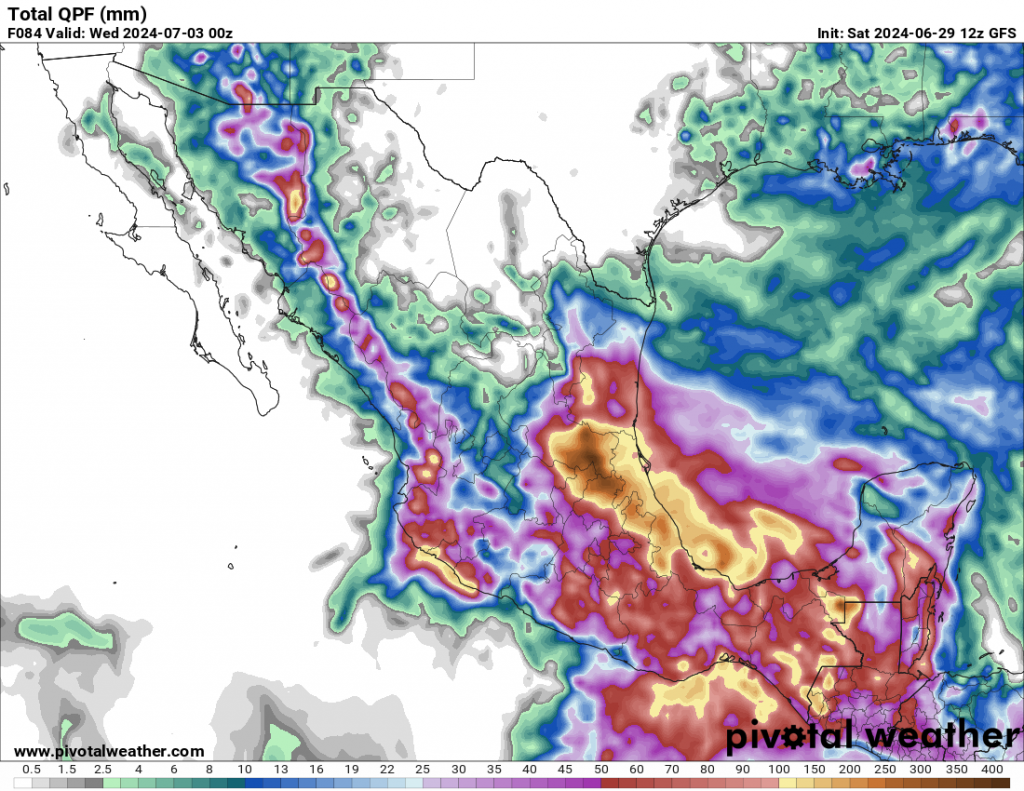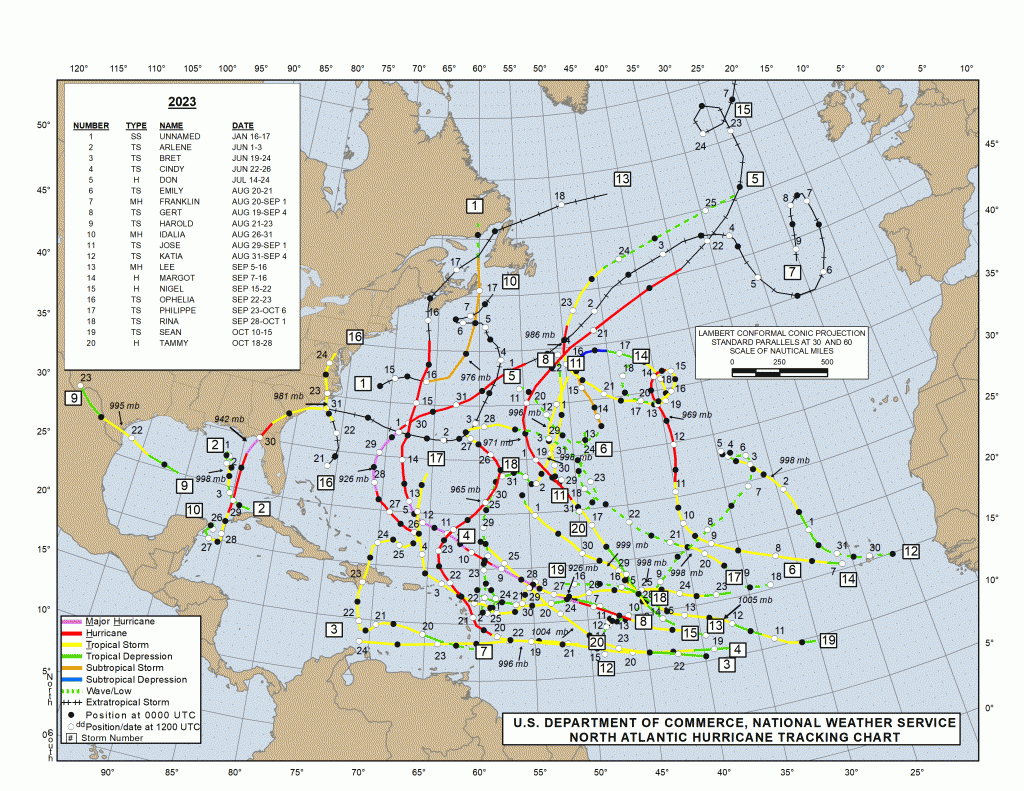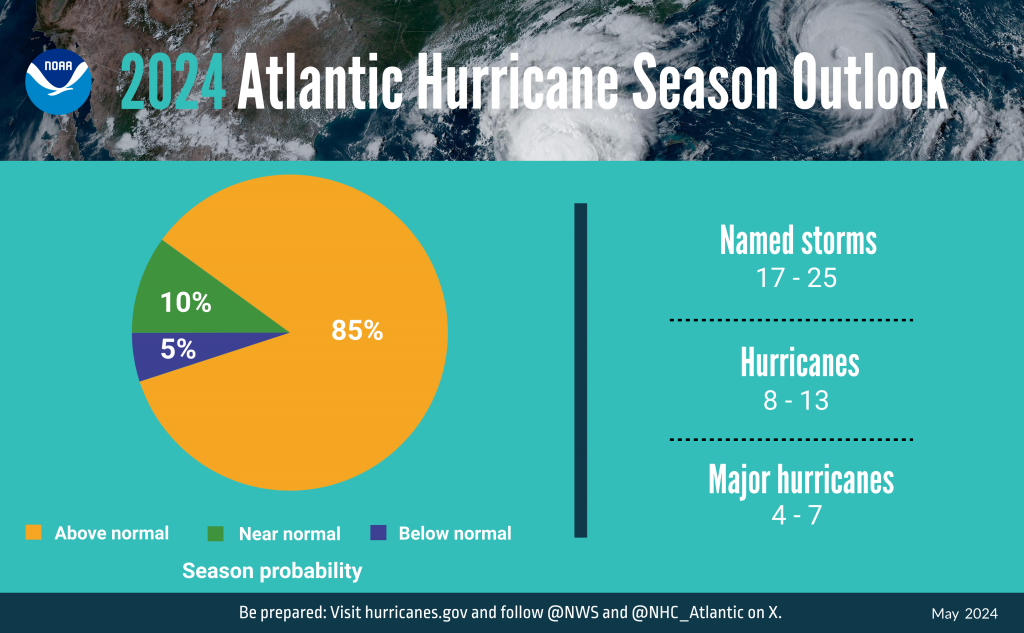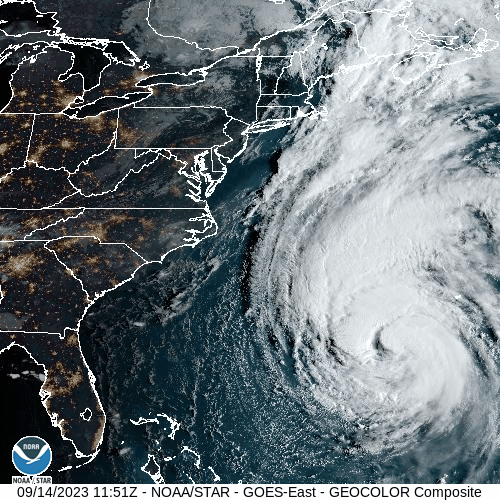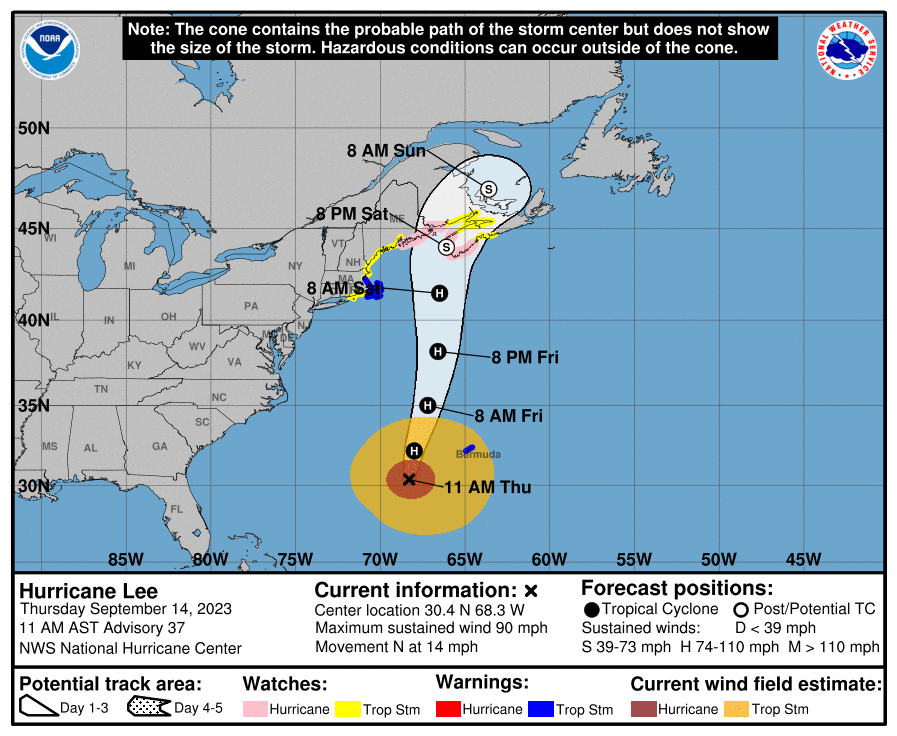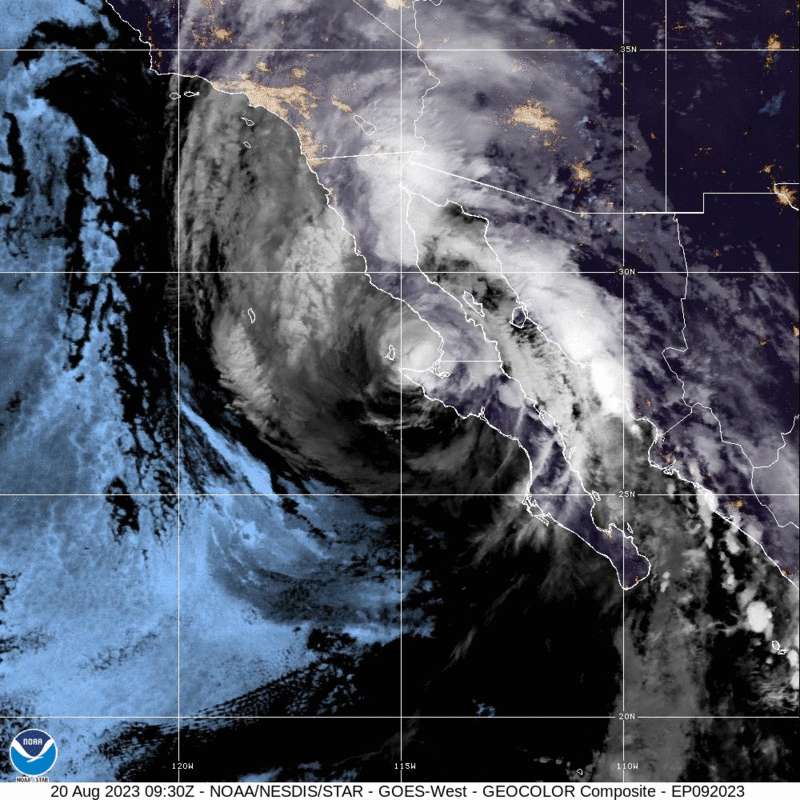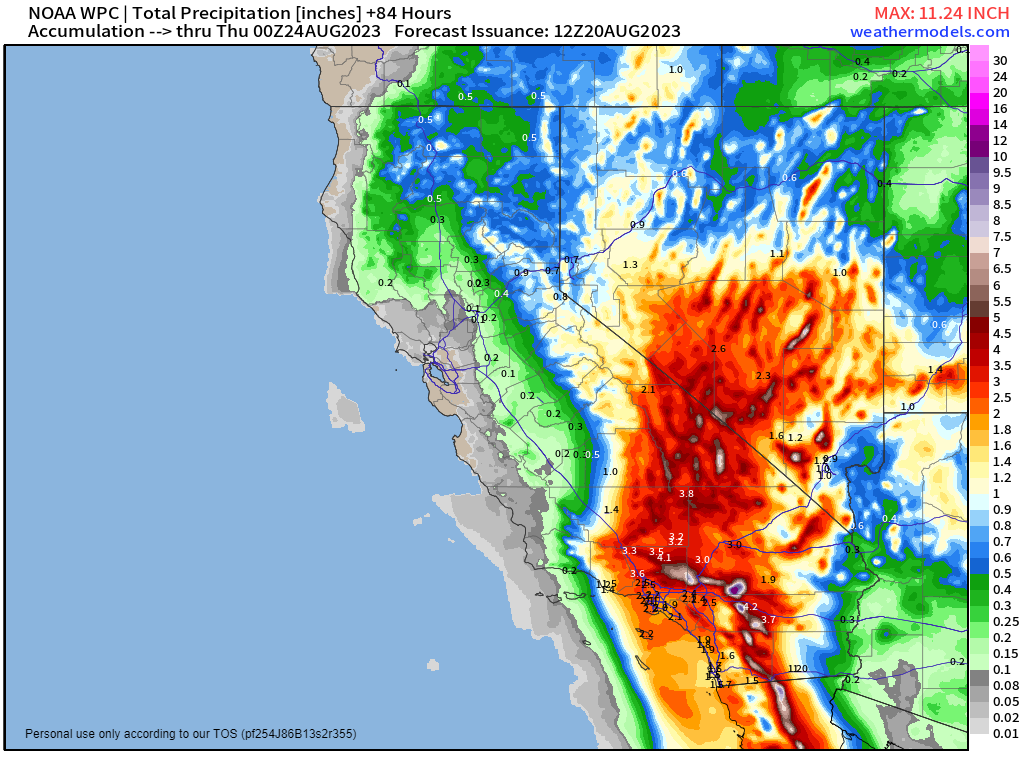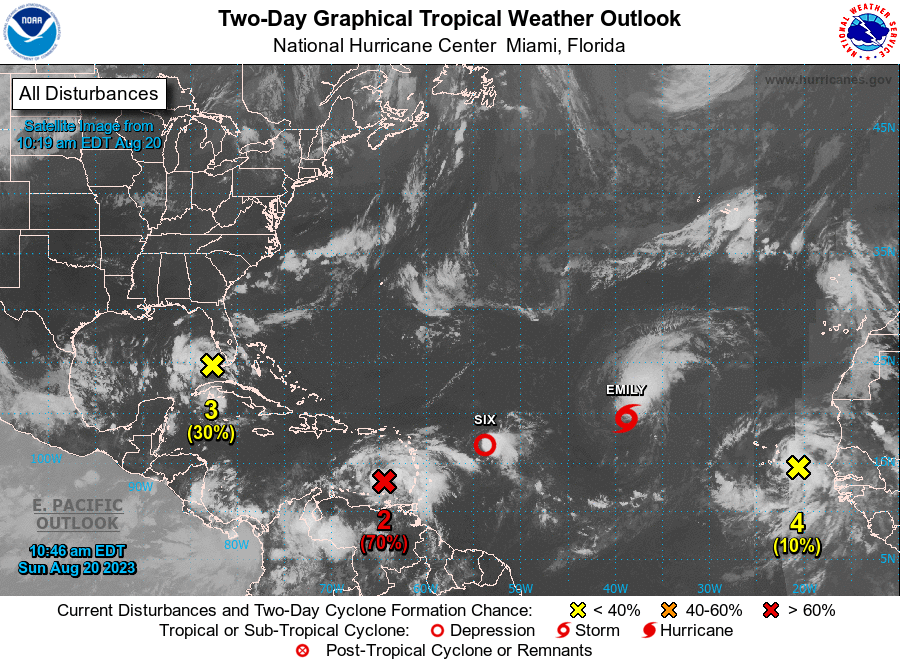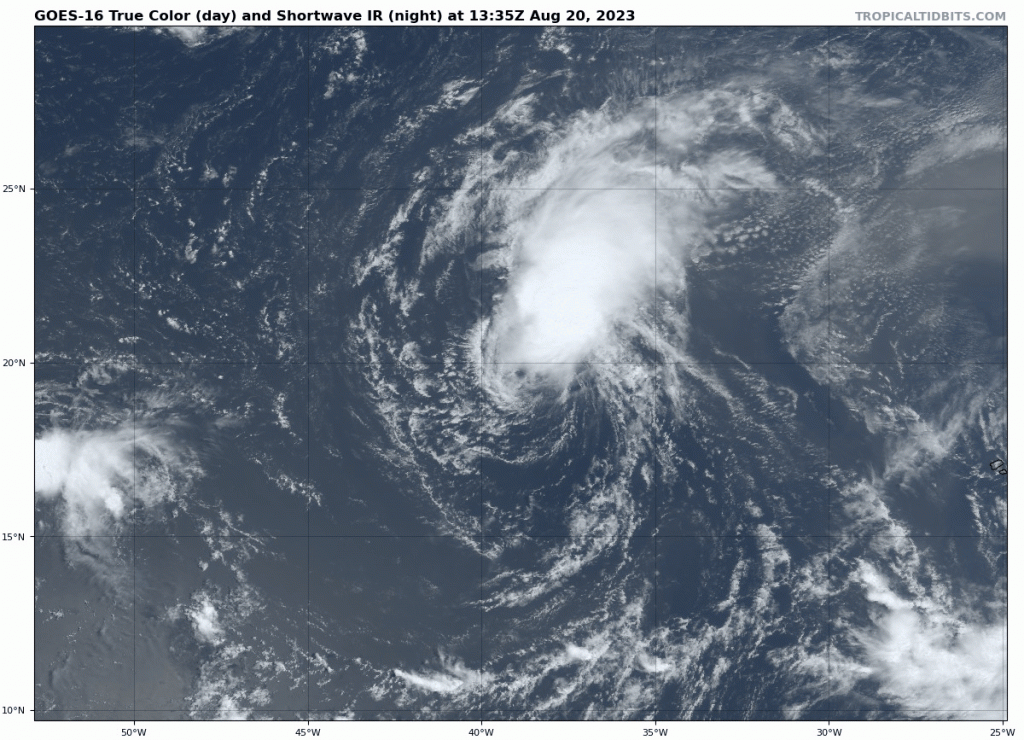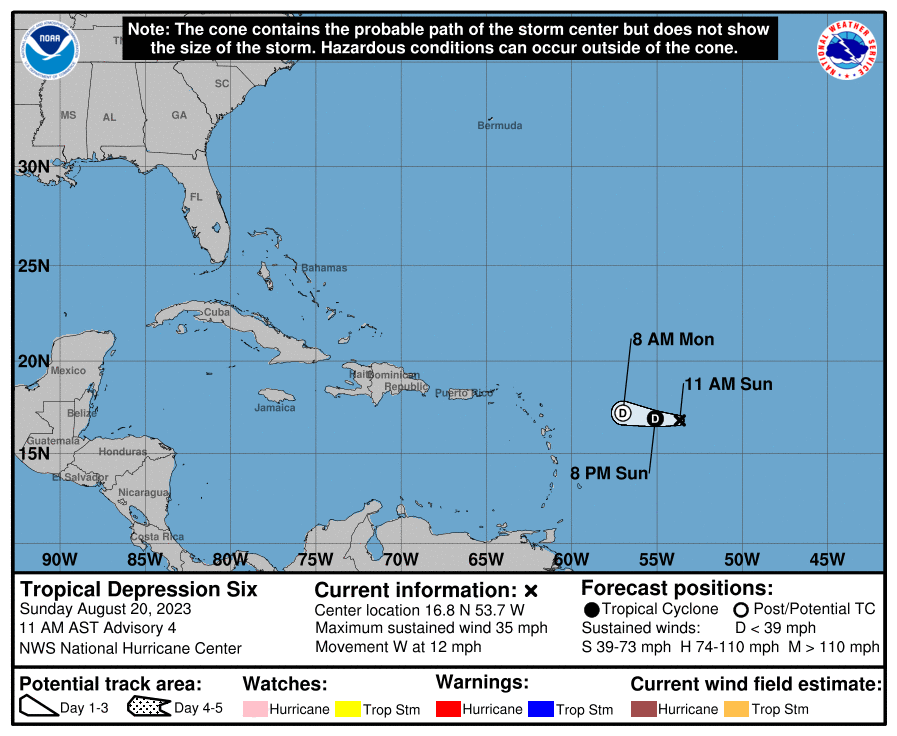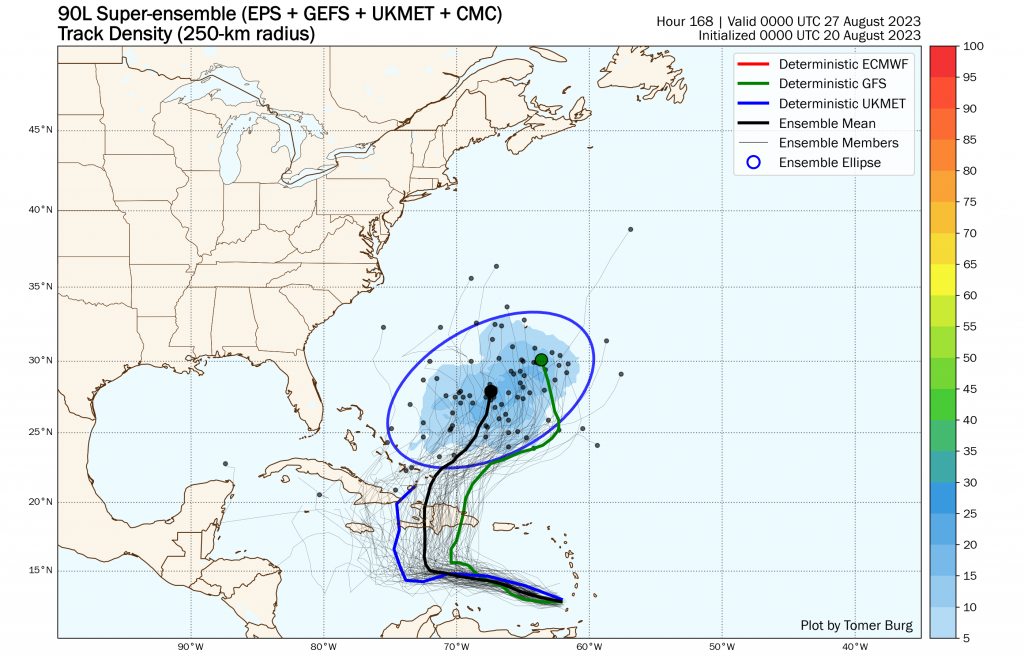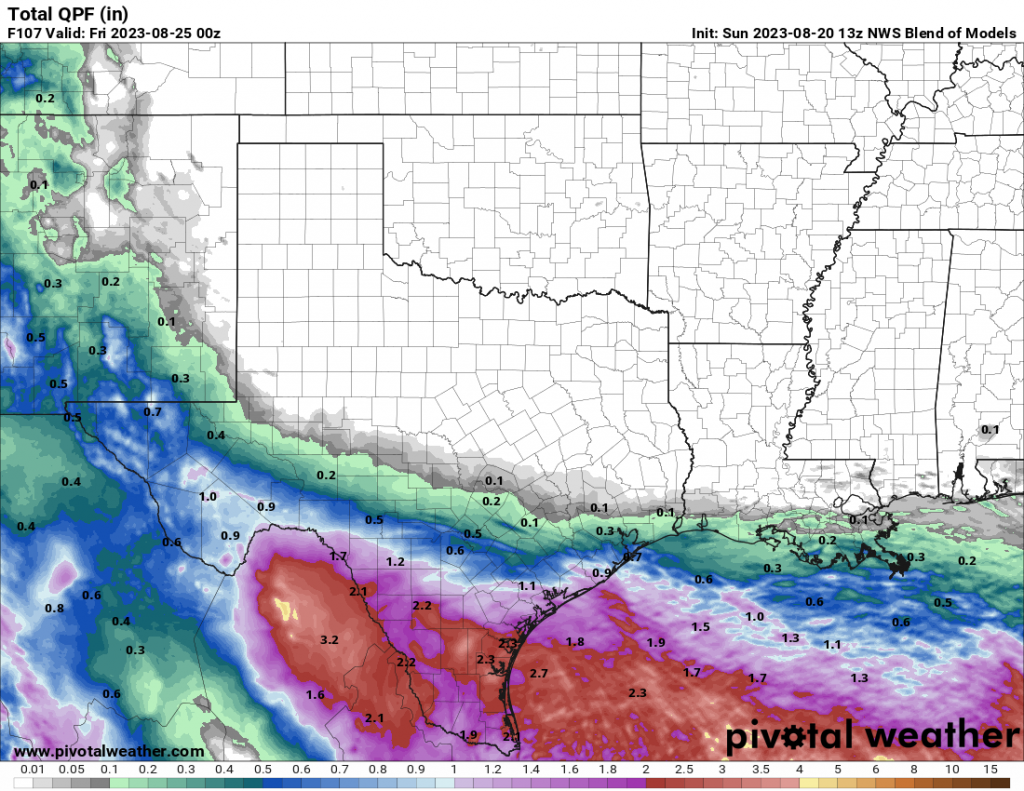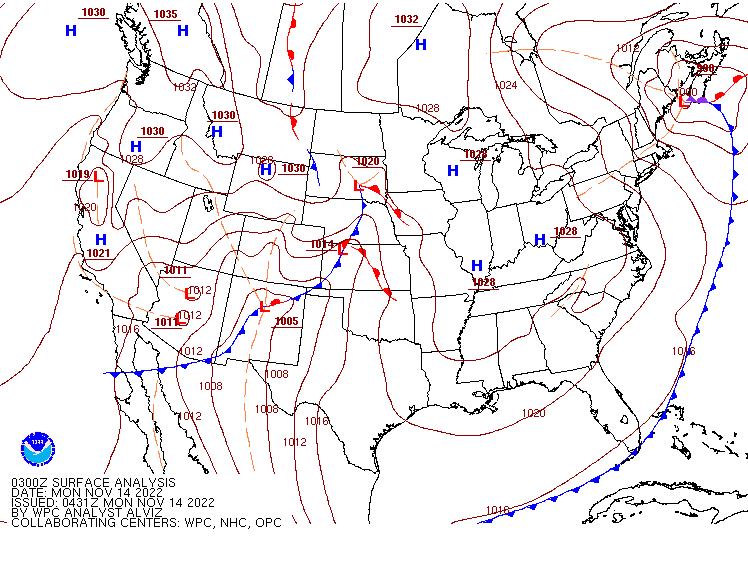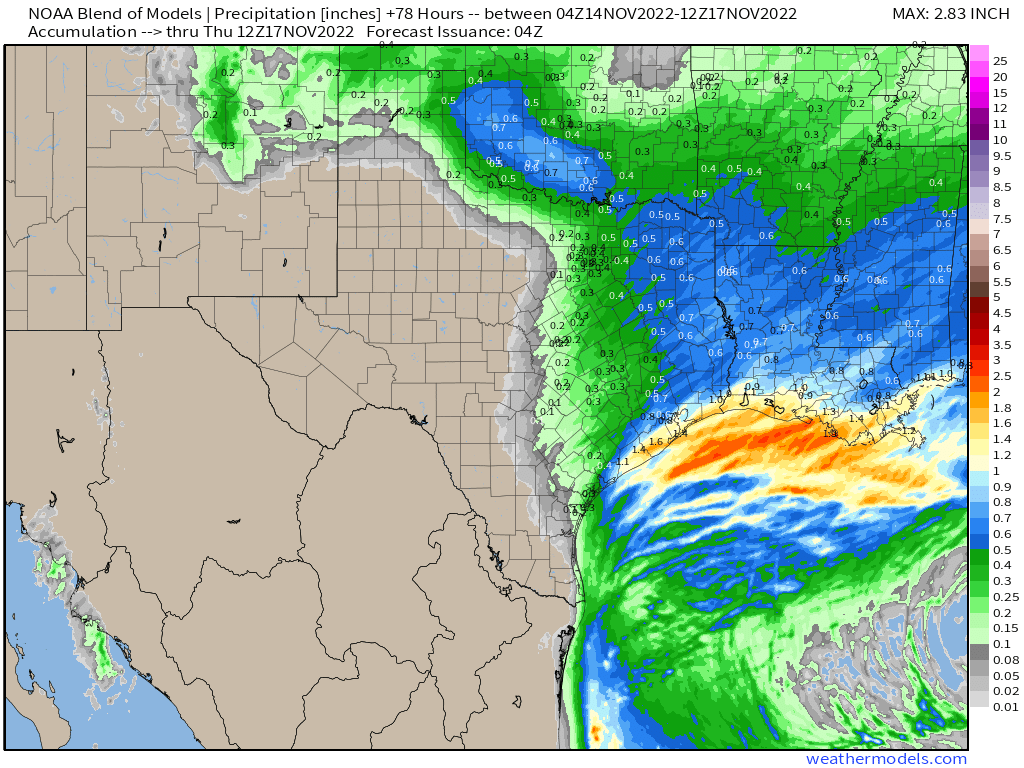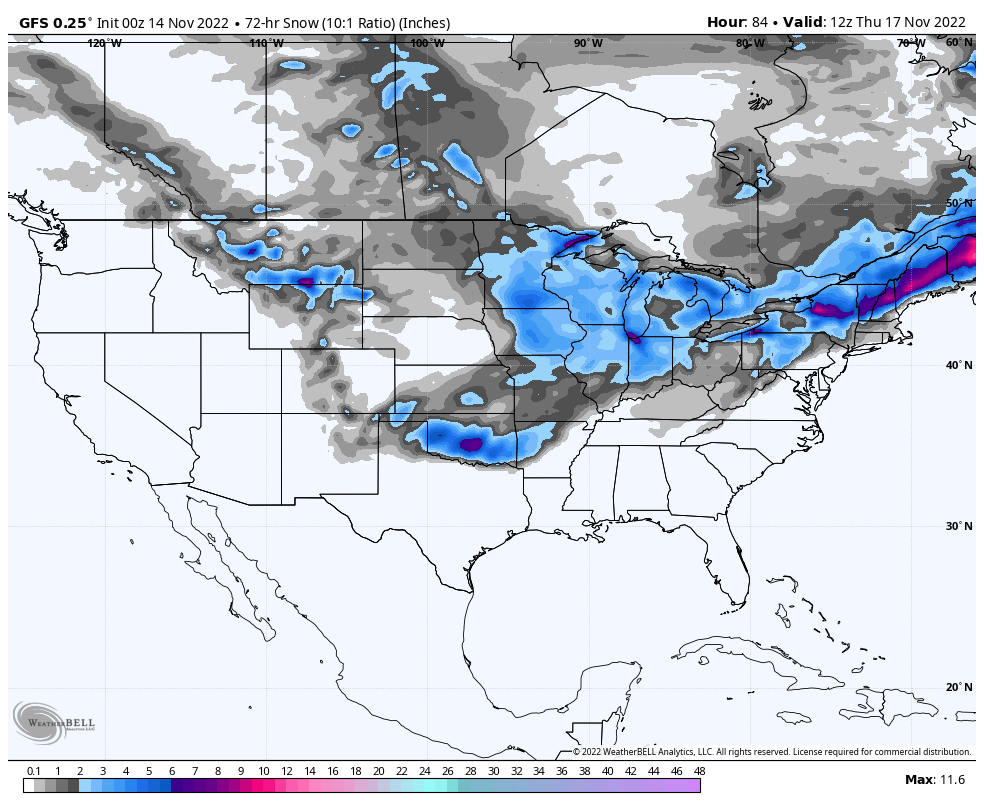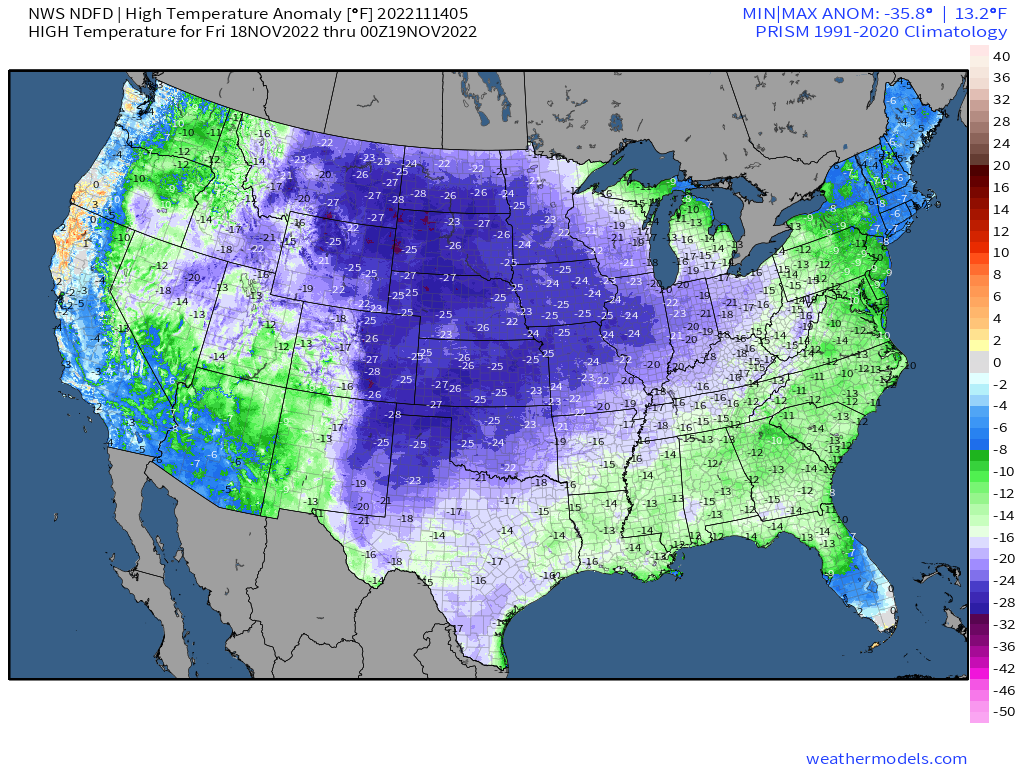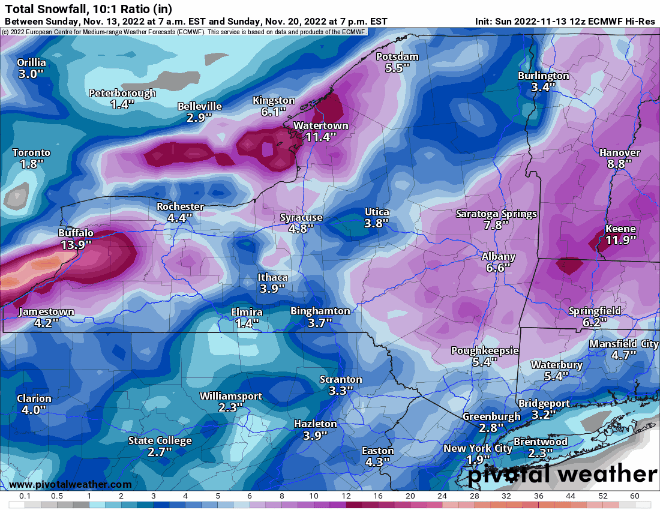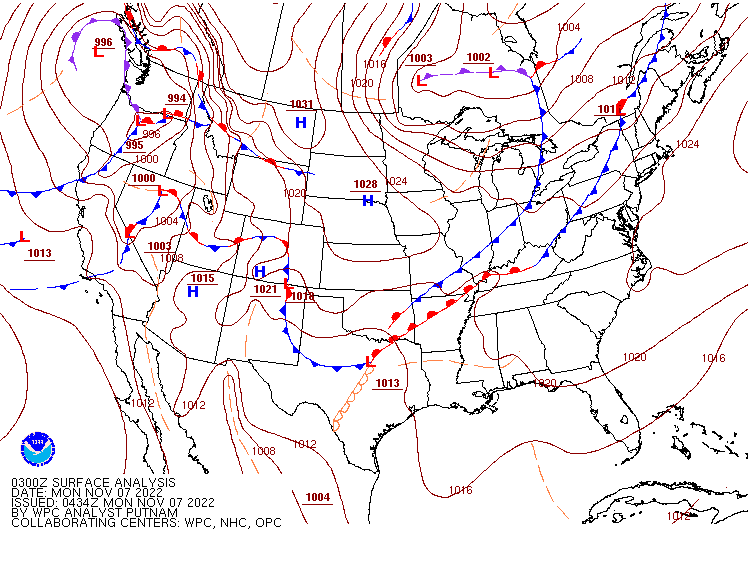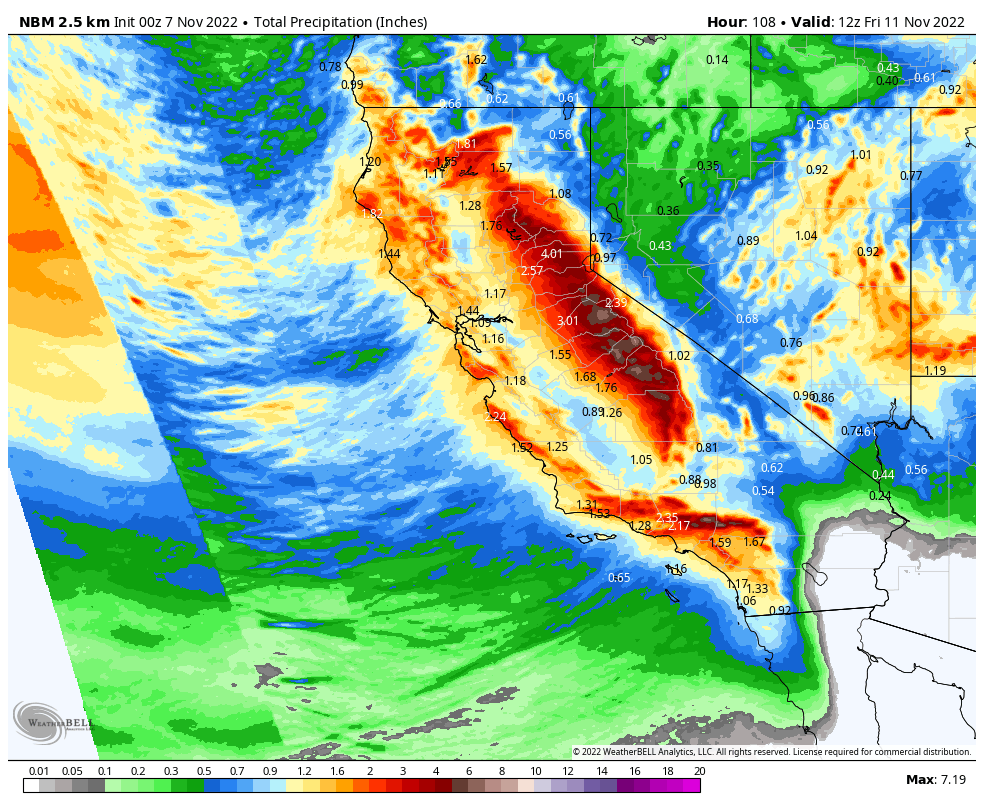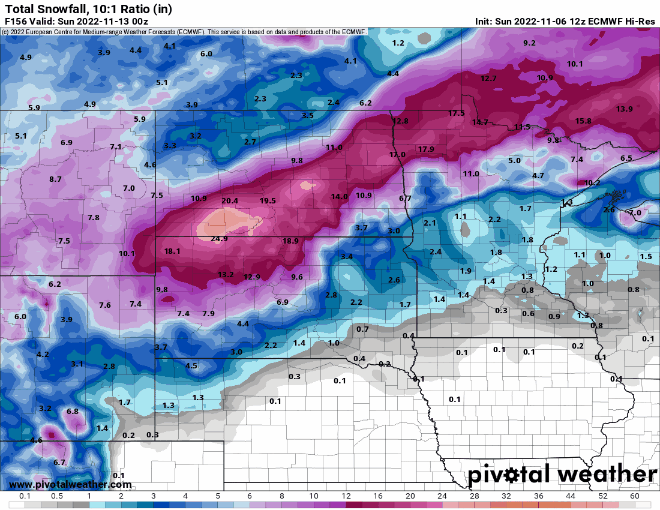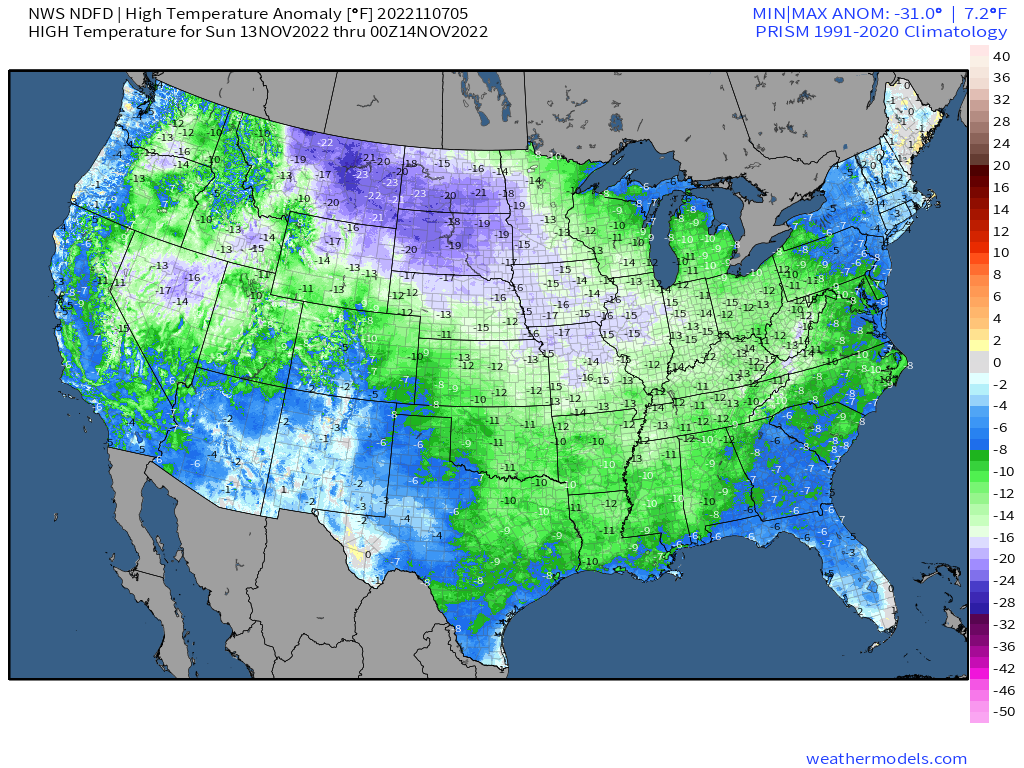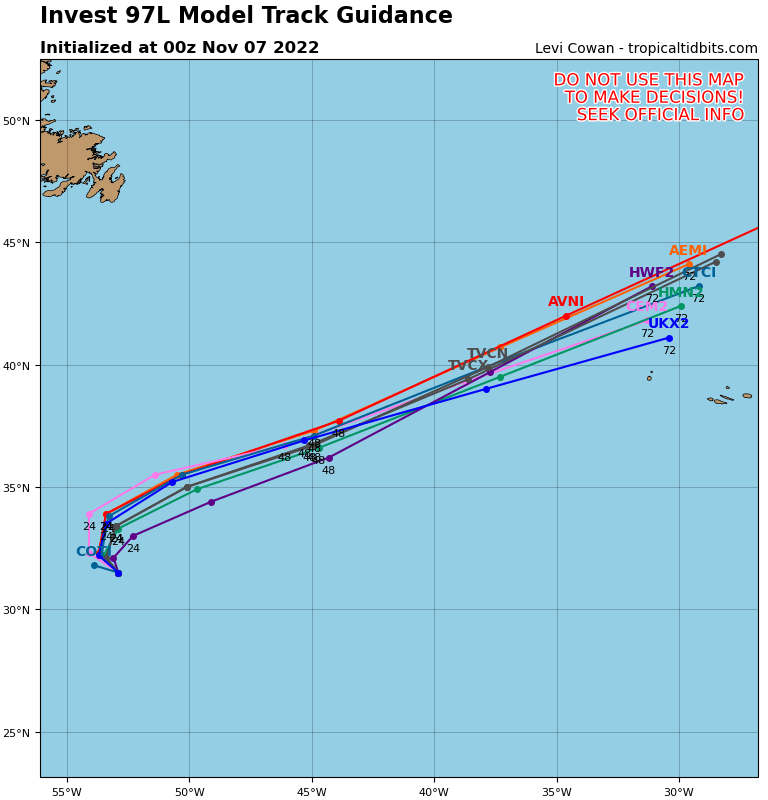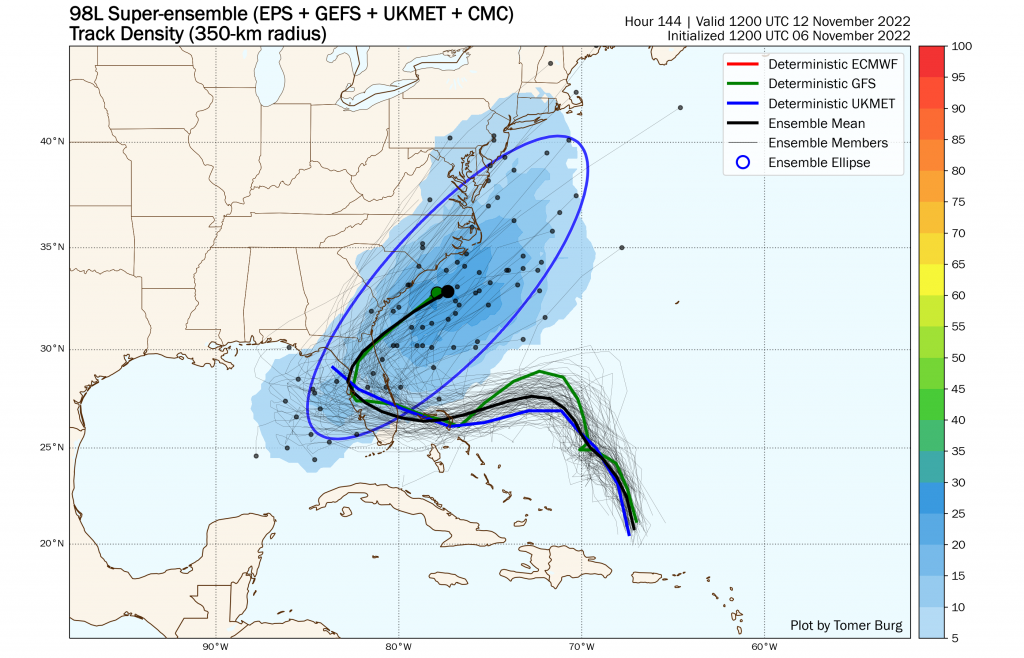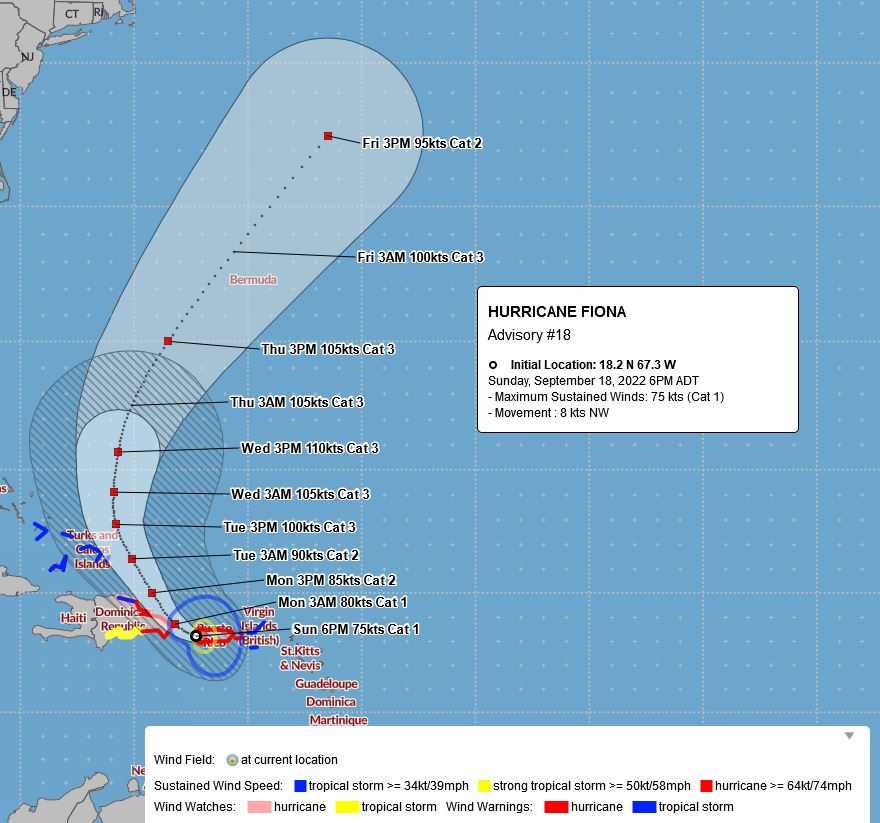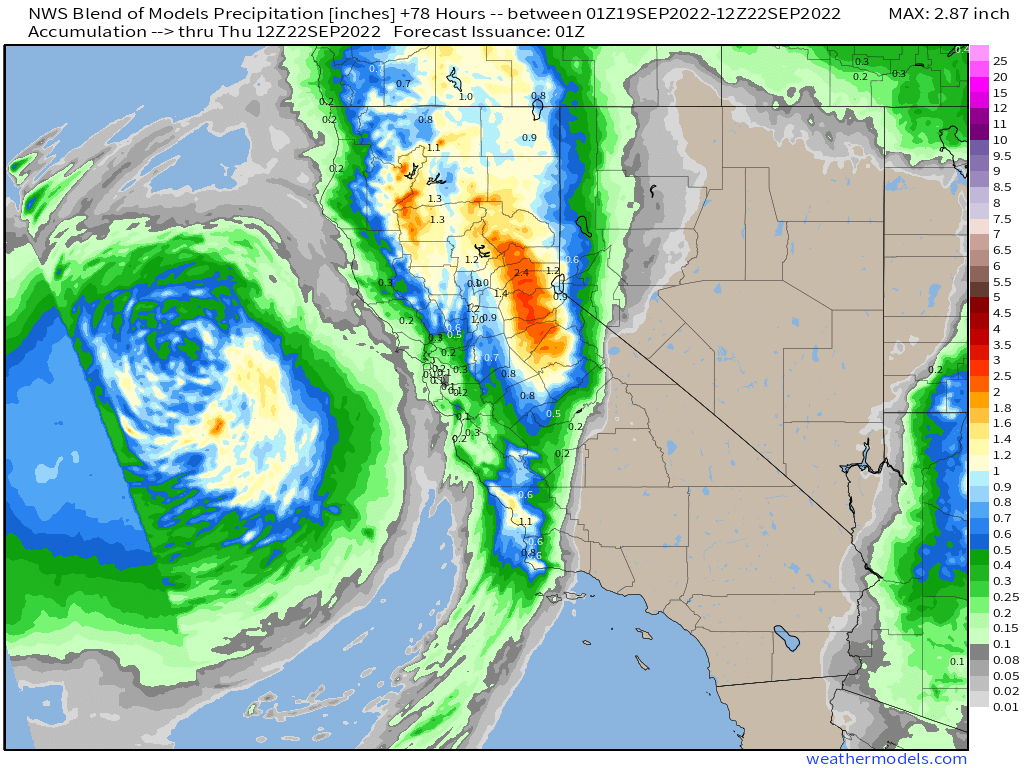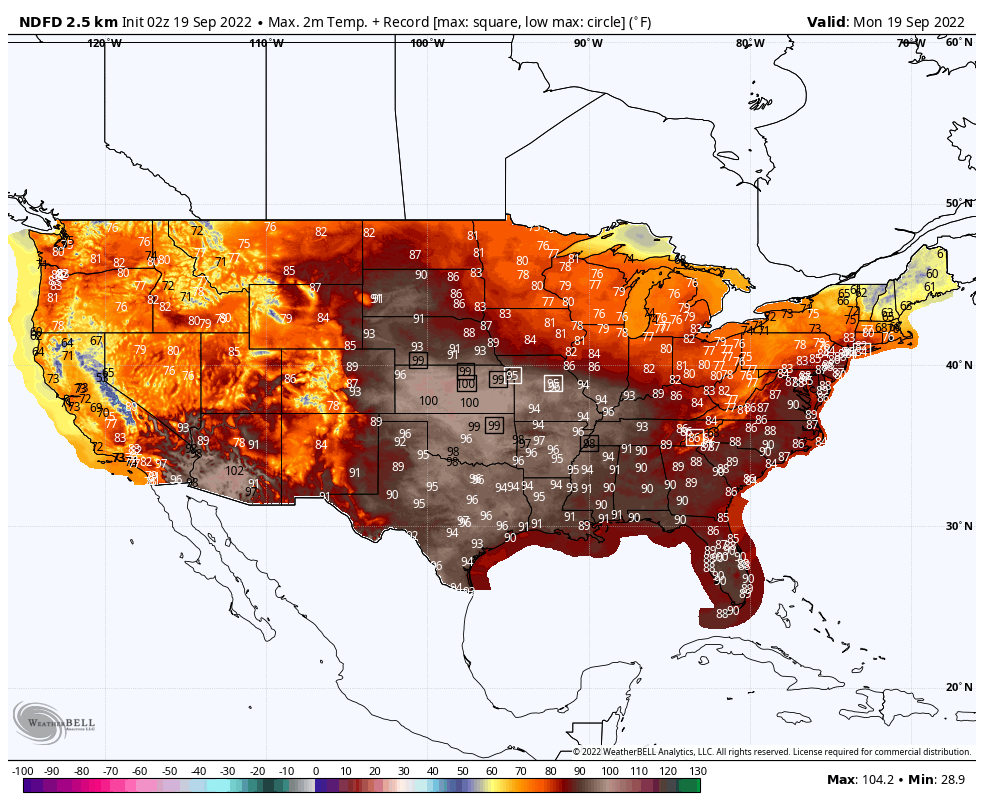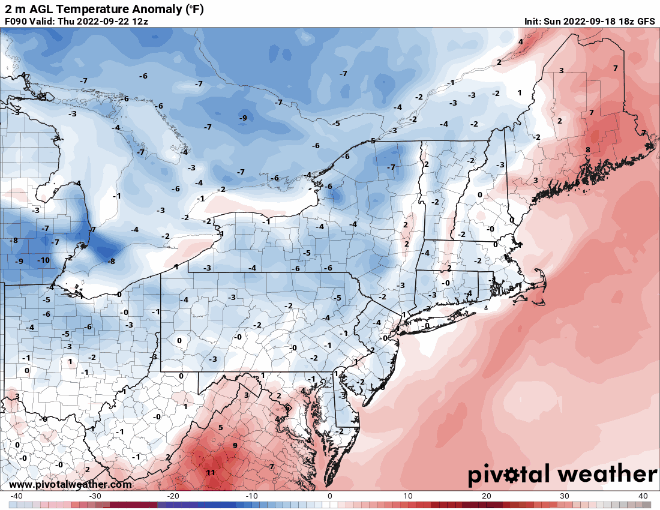Atlantic hurricane season is off to a slow start, which is fairly normal despite the early start in many recent years, and one of the main reason has been Saharan Dust.

In the mid-latitudes, most systems move from west to east, but in the tropics, it’s the opposite, with systems moving from east to west. We see this all the time with tropical waves and once they develop, most tropical systems head towards the west across the Atlantic. Early in the season though, these easterly winds will send large plumes of sand and dust off the Saharan Desert and into the Atlantic, where the prevailing winds carry them across the ocean.
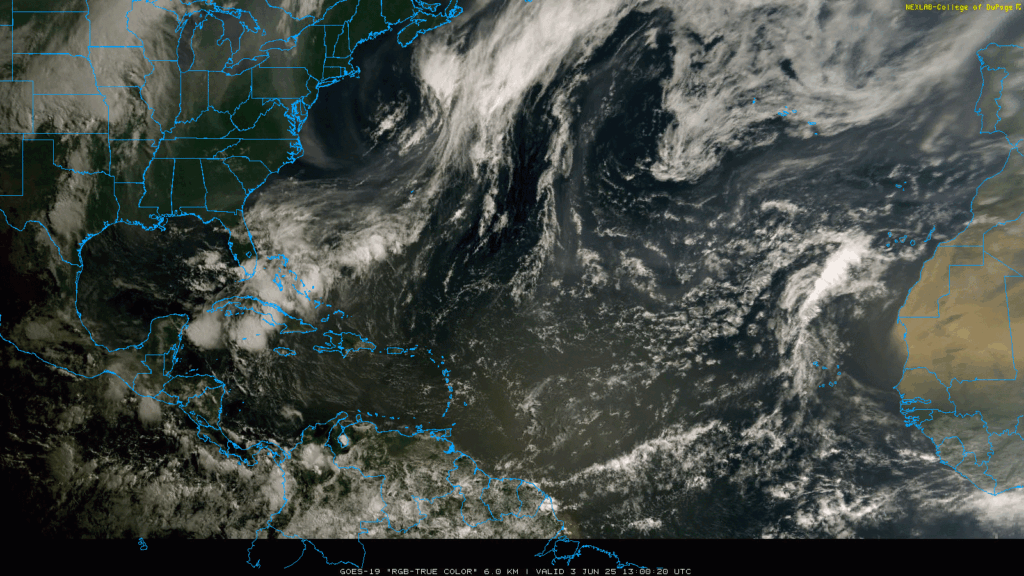
As these plumes move across the Atlantic they suppress shower activity, preventing any storms from getting organized. They also limit the amount of sunlight getting through, which keeps the ocean temperatures a little cooler, especially in the Main Development Region of the central and eastern Atlantic. Ocean temperatures in this region are generally too cool for any systems to develop until we get into the latter half of July in a typical season. Tropical systems need to be over water that is 26 Celsius (79 Fahrenheit) or warmer to maintain their intensity or strengthen.
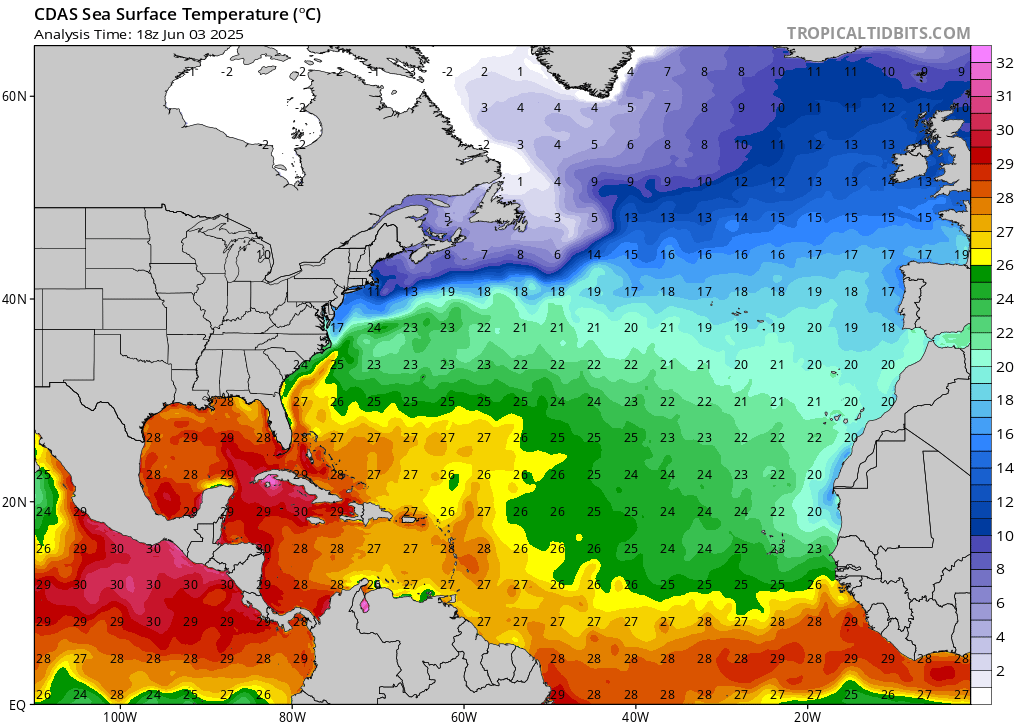
As the Saharan Dust reaches the Caribbean, it can have detrimental effects on the islands. In additional to produce poor air quality, the lack of cloud cover and shower activity results in very warm to hot temperatures across the islands. Instead of high temperatures in the upper 80s to near 90, temperatures can soar into the lower to middle 90s, with heat indices well in excess of 100. Some of these plumes can make their way into the Gulf and across parts of Florida, the Southeast, and Texas, resulting in hazy conditions.
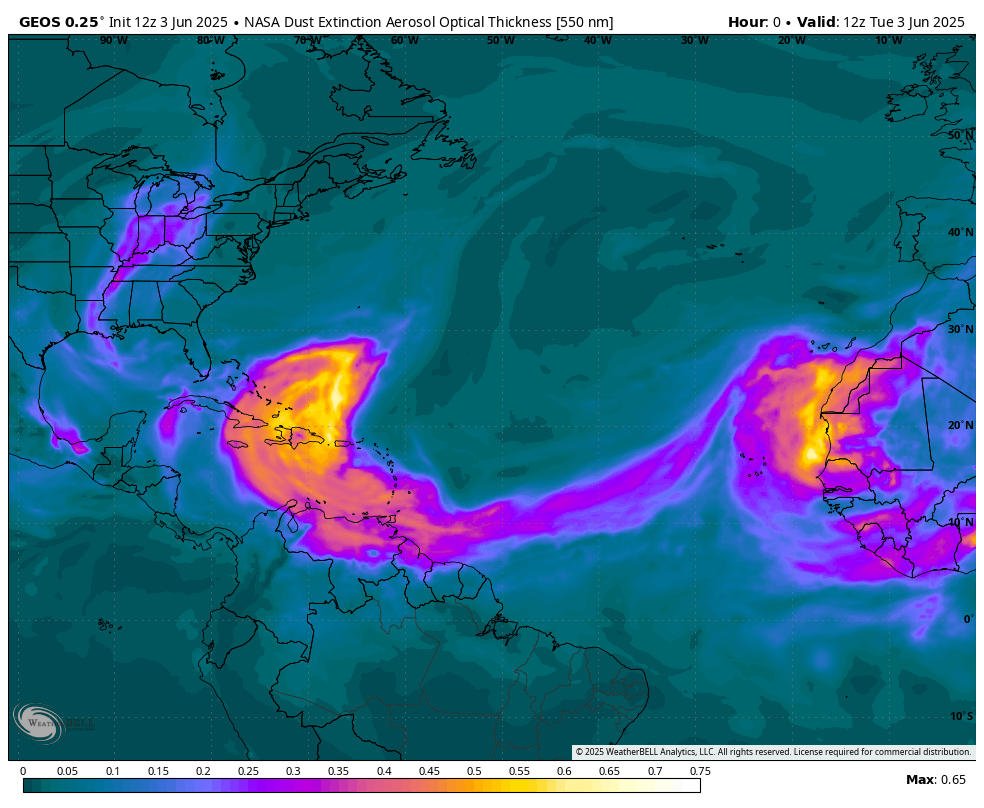
While water temperatures are not yet warm enough to support tropical systems across the Main Development Region, they are plenty warm enough across the Caribbean, Gulf, and off the Southeast Coast near the Gulf Stream. At this time of year, we typically see clusters of showers and thunderstorms from southern Mexico across Central America and into the western Caribbean. These storms are part of the larger Central American Gyre, a very broad rotating area of showers and thunderstorms that can result in very heavy rain and flooding in parts of Central America. Sometimes you’ll see activity break off from this gyre and develop into a tropical depression or tropical system on either the Caribbean side or the eastern Pacific side of Central America. While nothing is imminent, this is an area to watch for development early in the season.

Another area that needs to be watched is near the Bahamas and off the Southeast coast. As cold fronts stall out and dissipate in this region, they can leave behind clusters of showers and thunderstorms. If they stay over the warm waters of the Gulf Stream long enough, they could eventually develop into a system. This is something that we are watching at the moment. Showers and thunderstorms have been producing heavy rain across Florida for the past few days, and will slowly drift northeastward this week. Some of the forecast models show the potential for a weak area of low pressure to develop off the Southeast coast, but whether or not it is tropical is yet to be determined. The system is likely to remain very weak, though it may produce some heavy rain and gusty winds for portions of the Carolinas, but it will get absorbed by another cold front this weekend, which will usher it out to sea and away from the East Coast.
